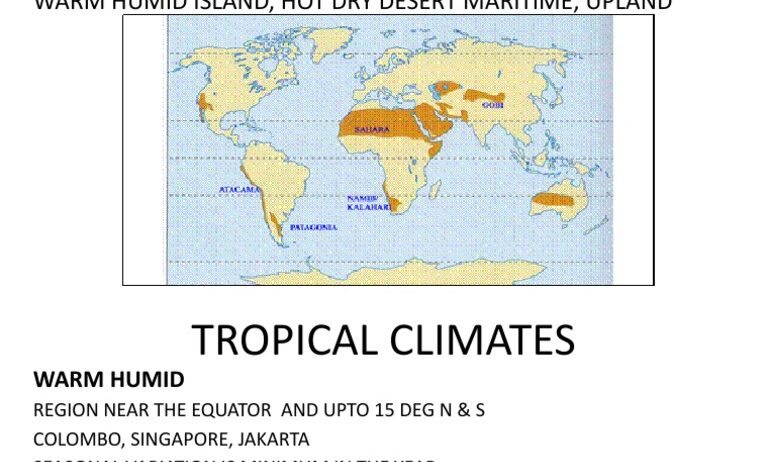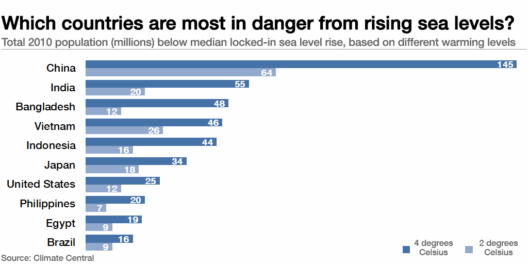Tropical Climate: An Exploration of Heat, Humidity, and Lushness
Understanding the Essence of Tropical Climate
Tropical climates are often characterized by their warm temperatures and abundant rainfall. Found between the Tropic of Cancer and the Tropic of Capricorn, these regions experience profound warmth all year round, with minimal temperature variation. What ignites an intrigue for these environments is not merely their heat, but the intricate ecological systems birthed from consistent warmth and moisture. As one journeys through the lush landscapes of tropical regions—from majestic rainforests to vibrant wetlands—the spectacle of life flourishing in this climate raises questions about the delicate balance of such ecosystems.
Defining Key Characteristics
The defining features of a tropical climate are evident: high average temperatures ranging from 20°C (68°F) to 30°C (86°F), alongside high humidity levels that often exceed 70%. These conditions ensure uninterrupted growth cycles for various flora and fauna, which thrive in such an environment.
Precipitation in the Tropics
However, another critical component of the tropical climate is its precipitation patterns. The climate can be broadly divided into two primary subtypes: the tropical rainforest climate (Af) and the tropical monsoon climate (Am). The former receives significant rainfall throughout the year, nurturing dense, biodiverse forests, while the latter experiences distinct wet and dry seasons, influencing agricultural practices and settling patterns.
Rainforests, for instance, receive more than 2,000 millimeters (79 inches) of rainfall annually. This abundance leads to spectacular biodiversity, with flora and fauna adapted to thrive in such luxuriant settings. The phenomenon of vertical layering is particularly notable in rainforests, where trees reach staggering heights, harboring numerous species within their canopies. Each layer—emergent, canopy, understory, and forest floor—holds a distinct community of organisms contributing to the overall ecosystem.
The Wildlife of the Tropics: A Symphony of Biodiversity
Exploring the wildlife inhabiting tropical regions adds a captivating layer to the understanding of this climate. Tropical regions are home to around half of the world’s plant and animal species, despite covering just about 7% of Earth’s surface. Central to this biodiversity are specific adaptations that organisms have developed to cope with higher temperatures and humidity levels.
Adaptations in Flora and Fauna
Plants exhibit unique adaptations, such as large leaves that maximize photosynthesis while minimizing water loss. Such structures are crucial for survival and growth amid the lush canopies. Epiphytes, or air plants, thrive in these environments, deriving nutrients and moisture from the air, rain, and debris that collect in their leafy surroundings.
Meanwhile, fauna in tropical climates showcase equally impressive adaptations. The colorful plumage of tropical birds, the vibrant markings of amphibians, and the elusive patterns of reptiles speak volumes about their evolutionary trajectories. Many species have evolved mechanisms to thrive in such competitive habitats, often resulting in intriguing forms of symbiosis and predation.
Cultural Significance of Tropical Climates
Human societies have similarly intertwined their destinies with tropical climates. From agricultural practices to cultural expressions, the climate profoundly influences human life in these regions.
Agricultural Practices
Smallholder farmers cultivate crops such as rice, coffee, and various fruits which have adapted to thrive in these verdant environments. The reliance on traditional techniques often manifests a deep understanding of local ecosystems. Such agricultural methods, when practiced sustainably, can enhance food security while minimizing environmental degradation.
Cultural Expressions
Artistic expressions, folklore, and music in these regions often draw inspiration from the surrounding landscapes. Lush imagery of jungles and the sounds of rain shaping the rhythm of songs reinforce a connection to nature unseen in temperate zones. The spiritual significance attributed to certain trees or animals often reflects a broader understanding of ecosystems that many Western perspectives tend to overlook.
Challenges Facing Tropical Climates
Despite their beauty and ecological importance, tropical climates are facing unprecedented challenges from anthropogenic factors. Deforestation, climate change, and land-use conversion threaten these delicate ecosystems.
Deforestation and Its Consequences
The relentless push for agricultural expansion, coupled with logging and urbanization, results in the devastation of rainforests. This loss of forest cover not only threatens biodiversity but also releases significant amounts of carbon dioxide, contributing to global warming.
Climate Change
Changes in temperature and precipitation patterns threaten the balance of fragile ecosystems, leading to increased vulnerability to invasive species and habitat loss. As global temperatures escalate, the uniqueness of tropical climates risks being lost forever, along with countless species that are yet to be discovered.
Preserving Tropical Ecosystems
Engaging in preservation efforts is essential for safeguarding tropical climates. Initiatives focusing on reforestation, sustainable agriculture, and ecotourism can help mitigate some effects of climate change. Proactive measures driven by local communities and guided by scientific research can lead to effective conservation strategies.
Conclusion: The Fascination Continues
In conclusion, the tropical climate serves as a captivating case study of life, adaptation, and human interaction with nature. From the wealth of biodiversity to the intricate socio-cultural tapestries woven by human civilizations, the tropics represent an ongoing narrative of resilience and fragility. With a commitment to understanding and preserving these vital ecosystems, we hold the potential to forge a sustainable future amid the lush and vibrant landscapes that tropical climates offer.








